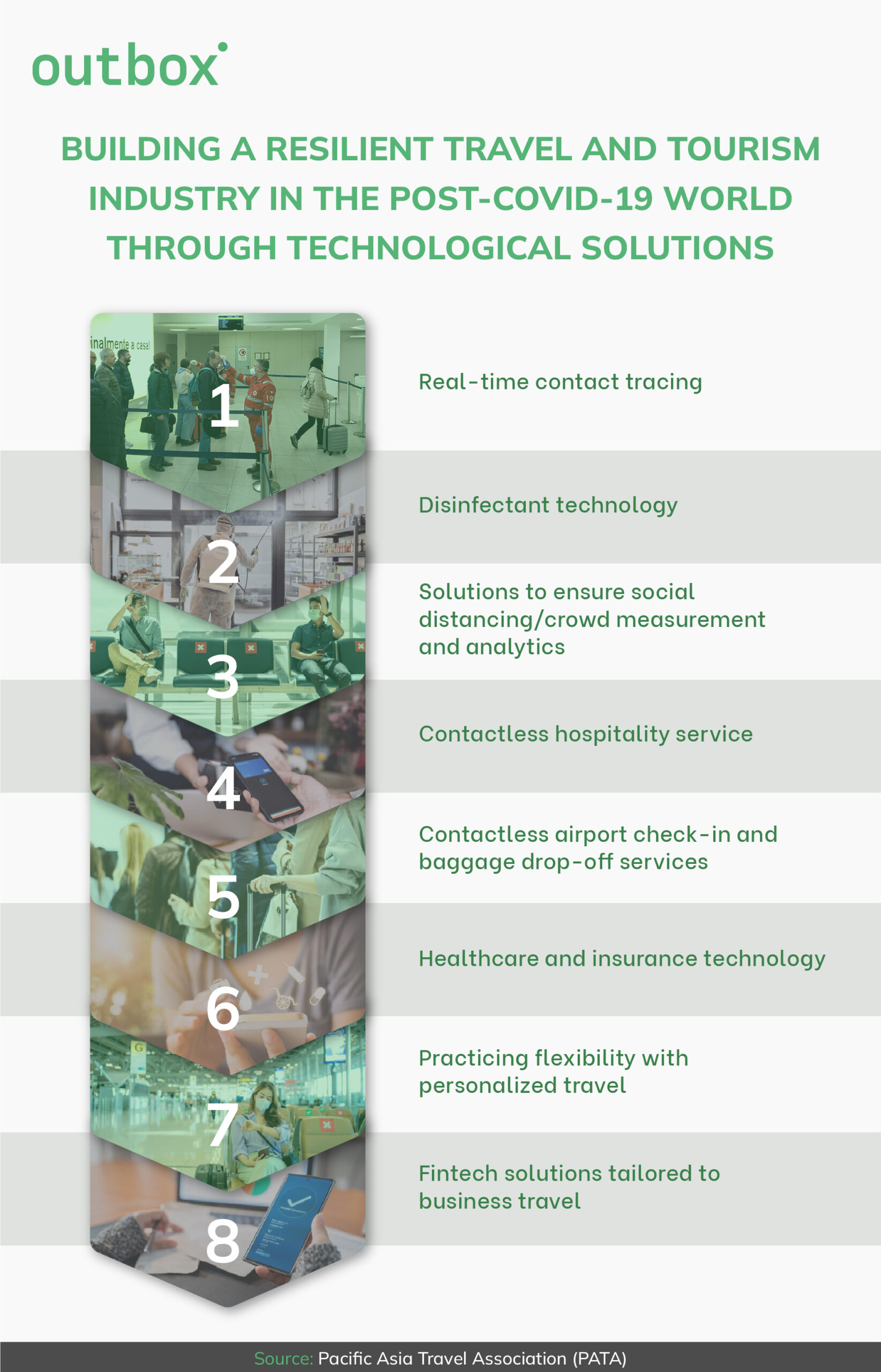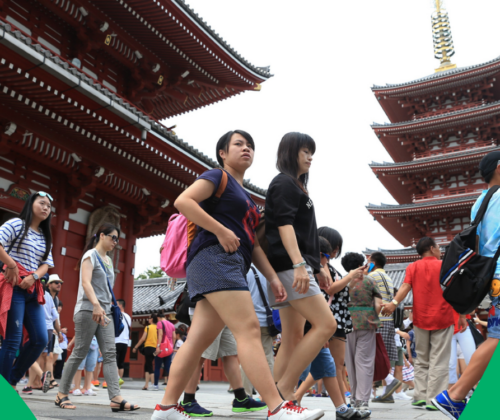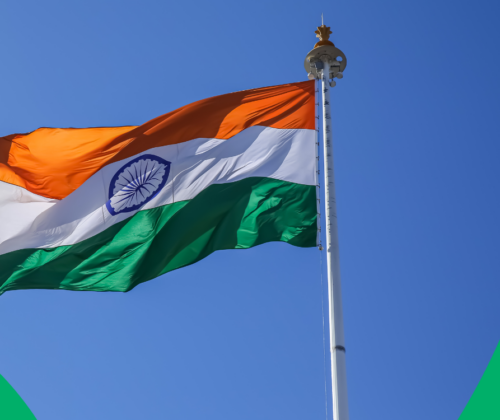Emerging technologies transformed the travel and tourism businesses in the last three decades, as the internet became available to the masses and a wide variety of booking and informational e-platforms and other digital solutions emerged. Before the pandemic, solutions and initials of digital transformation in travel businesses such as contact tracing, contactless technologies, insurtech, etc., were already deployed. However, although some technologies had been previously utilised in the T&T industry, the COVID-19 brought significant attention to the importance of such technologies that could prevent, alert and help mitigate infectious diseases.
The report (The hard Reboot: Technology powers mobility) was published by Pacific Asia Travel Association, explores some technologies that provide greater resilience in the T&T industry and are already considered permanent fixtures in some geographies. We propose a seamless framework for travelers’ journeys that would combine previously used consumer technologies, such as OTAs and vehicle booking platforms, with technology tools to prevent and mitigate potential health threats and, therefore, to build greater resilience in the Travel & Tourism industry.

1. Real-time contact tracing
Effective contact tracing could allow authorities to trace the suspected patient’s moving history in the previous 14 days with ease. A study by Future Market Insights (2020)1 reported that the contact tracing market was valued at US$147 million in 2020 and will grow at 15% CAGR (compound average growth rate) through 2030. Although the main purpose of contact tracing platforms is to control infectious disease outbreaks, data privacy, child protection rights, and transparency remained as important concerns, which created opportunities for new companies to take a piece of the pie from existing market revenue share.
2. Disinfectant technology
Beyond preventing transmission through contact tracing, actual disinfection of physical areas and objects are just as important. The pandemic has pushed innovators to develop more efficient ways for disinfection. In New York, the Metro Transit Authority implemented UVC lighting in subways. Puro Lighting, a US-based startup, provided the lighting which eliminates almost all viruses immediately. We can expect airports, trains, and other mass transportation systems to adopt similar measures. The UV disinfection systems market is expected to register a CAGR of 11.2% over the forecast period, 2020-2025.
Low cost-effective preventive measures include Plexiglass barriers at front desks and also at dining areas in restaurants, with disinfecting wipes. Hotels could leave rooms empty for longer periods between a series of cleanings to make sure that any contamination is eliminated. Hotel rooms should be sealed before disinfection.
3. Solutions to ensure social distancing/crowd measurement and analytics
The first thing that comes to mind when tracking crowds during the COVID-19 pandemic is temperature. India-based Arvi, founded in 2019, develops contactless thermal scanning kiosks. Besides tracking crowds’ temperature, Sensory, a Silicon Valley company, provides a solution to detect people who do not wear a face mask, or detect people who cough and sneeze. This device can be integrated in corporate security software.
Aside from introducing thermal scanners at airports and transportation hubs to detect fever, the other important element when it comes to crowds is distancing, especially under the circumstances that infection rates might spike again. Airports will rely on visual sensors to optimise the traveler experience and ensure social distancing. For example, Zensors has created a technology that converts security cameras into sensors that automate space analytics which could subsequently help ensure that travelers keep their distance.
4. Contactless hospitality service
The utilisation of contactless service improves prevention procedures against infectious diseases and gained significant attention amid the COVID-19 pandemic. Hospitality providers are expected to further improve their services by minimising contact services by digitising check-ins so that guests could avoid lining up at the front desk. Travelio, a proptech apartment rental provider from Indonesia, provides safety and hygienic solutions for its guests, as they can now enter apartments with smart locks, which reduces human contact.
Hotels could implement property management software with mobile concierge apps so that guests could check in using digital keys, order meals and services, and access disinfection record logs. For the Chinese market, Marriott International has partnered with Alibaba Group’s Fliggy to install self-service kiosks powered by facial recognition technology for travellers to check-in upon their arrival. Its guest will need to scan their identity, take a photo, and input contact details; after the device verifies the identities, the device will then allocate room key cards. Other than that, Marriott International allows 31 of its hotels to allow travellers to check-in, access loyalty programmes and guest service requests through its newly launched mobile application. Connected hotel systems have proven effective in reducing the overall turnover time by automating bookings and communication with guests.
5. Contactless airport check-in and baggage drop-off services
In the post-pandemic world, heightened standards on health and safety will drive decisions in the travel industry. The use of contactless technology is expected to grow, as this can reduce transmission rates. Many stakeholders in the aviation, hospitality and other tourism-related sectors will likely push for “contactless” travel.
With the rise of contactless travel, biometric facial recognition technology will play a crucial role in verifying an individual’s identity and bookings. The biometrics industry includes products and services for fingerprint recognition, voice recognition, and palm & vein recognition. Currently, most airports are still relying on an automated fingerprint identification system (AFIS), an outdated biometric identifier technology that uses contact for identifying an individual. However, with the emergence of various infectious diseases, more airports will opt for an alternative identification system that enables contactless identifications. One of such solutions is Hanwang Technology, developed by a Beijing-based facial recognition solution company, which can identify an individual even if they are wearing a mask. Another solution to provide safe and contactless baggage check-in and drop-off services is from DUBZ, a UAE-based startup founded in 2016, which has developed a home check-in service that provides baggage disinfection.
6. Healthcare and insurance technology
Amid the pandemic, more consumers observed the benefits of healthcare technology, and demand for tools to access healthcare remotely is expected to increase henceforward. Israel-based Air Doctor offers the simple solution of finding local doctors and scheduling appointments while abroad. NCOVI is a mobile application founded in Vietnam for locals to complete health declarations online to keep track of the public’s medical conditions.
In the era of COVID-19, with travel being disrupted, many travellers faced financial loss, which subsequently made them realise the importance of possessing an insurance policy that protects their interest in the unforeseeable future. France-based Koala is reinventing travel insurance by compensating for flight disruptions, which could especially benefit business travellers and help travellers maintain confidence in uncertain times.
7. Practicing flexibility with personalized travel
The trend of personalisation in travel tech will have a renewed meaning. Recently, Journera, a startup focused on creating a seamless journey, raised US$11.6 million. Journera provides a solution to match hotel reservations to air, ground, or other relevant reservations to drive better personalisation. When its users face flight disruption, Journera will automatically help its users rebook reservations in the travel destination, notify hoteliers to get the room ready before the customer arrives, and deliver bags straight to the hotel room, so users do not have to wait at the carousel.
8. Fintech solutions tailored to business travel
In addition, contactless payment is desired by travellers, as well. In a survey of 1,260 business travellers conducted by global corporate travel management company BCD Travel, 67% said that contactless payment systems were extremely important. This strong preference will favour merchants that accept mobile wallets or enable a mobile-based shopping experience in airports.
Today, the contactless payments industry is estimated to be valued at roughly US$10.3 billion. In an effort to combat the pandemic, countries have increased contactless payment transaction limits significantly, presenting a strong tailwind for the contactless payments industry. Even countries that historically favoured cash payments are increasing adoption of contactless payments. According to Forbes, “The global contactless payments market sise is expected to go from US$10.3 billion in 2020 to US$18 billion in the next five years, which corresponds to an 11.7% compound annual growth rate (CAGR)”.
Source: Pacific Asia Travel Association (PATA)



